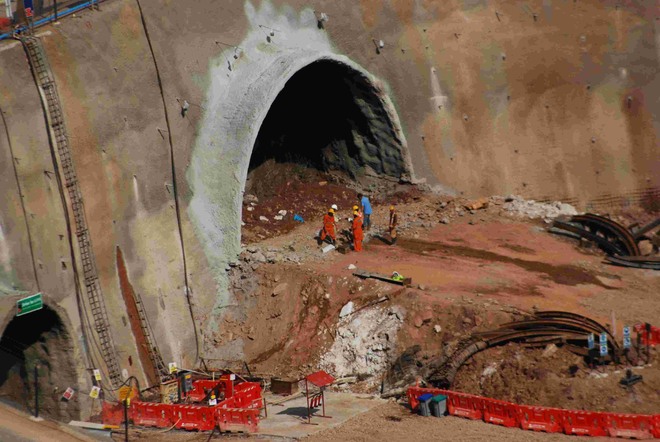Arteev Sharma
Tribune News Service
Jammu, July 5
The mammoth engineering exercise to create an all-weather road to the Kashmir valley is one step closer to becoming a reality with engineers set to drill a hole through the final section of India’s longest tunnel between Chenani and Nashri on July 13. The tunnel is simultaneously being built from the two ends and the teams will now meet at the centre by drilling a hole through the final section.
The 9.2 km tunnel, which is the part of the ambitious 286 km-long four-laning of the Jammu-Srinagar national highway, will reduce the distance between two capital cities — Jammu and Srinagar — by around 30 km. The road is likely to be opened to traffic in July next year.
“We will break through the Chenani-Nashri tunnel on July 13 and it will take another 10 months to complete the allied works before the road is thrown open to traffic,” said RP Singh, project director, National Highways Authority of India (NHAI).
Work on the tunnel was started on May 23, 2011 and its expected date of completion is May 2016. The executing agency later claimed it would be completed five months in advance. But the work got delayed following administrative and technical glitches.
The tunnel, connecting Chenani in Udhampur with Nashri in Ramban district, is being completed at a cost of over Rs 2500 crore. It will also reduce the existing road distance between two points on the highway from 41 km to 10.89 km.
Official sources said the NHAI was constructing a parallel escape tunnel along with the main tunnel for evacuation of commuters in case of eventuality.
The two tubes of the tunnel will be internally connected through 29 “cross-passages” (each after a gap of 300 meters) and the escape tunnel will exclusively be used for pedestrians.
Sources said the executing agency has kept provision for ventilation keeping in view the distance of the tunnel. “This state-of-the-art tunnel will also have parking spots after a specific distance to tow away or shift vehicles in case of a breakdown,” a source said.
The four-laning project would reduce the distance between two capital cities by 50 km. The reduction will take place primarily by constructing tunnels.
Unlock Exclusive Insights with The Tribune Premium
Take your experience further with Premium access.
Thought-provoking Opinions, Expert Analysis, In-depth Insights and other Member Only Benefits
Already a Member? Sign In Now










